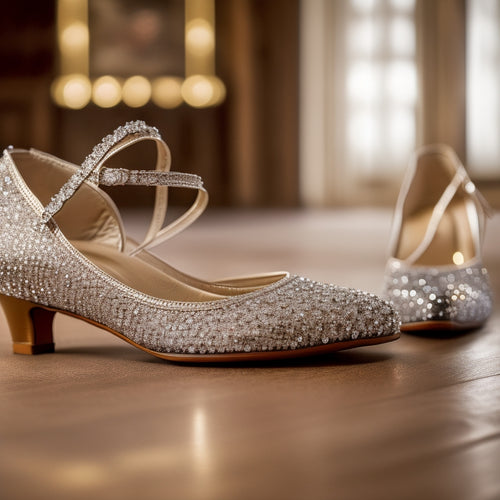
Dance Through Time: Rhythmic History Unveiled
Share
Through the rhythmic pulse of human experience, dance has evolved as a universal language, bridging cultural divides and reflecting the diversity of human expression across centuries and continents. From primal expression to sophisticated art form, dance has woven a rich tapestry of styles, elements, and eras. Folkloric traditions, cultural identity, and societal shifts have all left their mark on this dynamic art form. As we navigate the labyrinthine corridors of dance history, we uncover a mesmerizing narrative that not only echoes the past but also whispers secrets of the future, waiting to be unearthed with each step, beat, and gesture.
Key Takeaways
• Dance emerged as a primal form of expression in human civilization, bridging cultural divides and reflecting the diversity of human experience.
• Early dance styles, such as ballet, folk, flamenco, and classical Persian dance, laid the foundation for future evolutions.
• Cultural traditions and artistic expressions intertwined in dance, shaping unique styles and elements like music, movement, theme, techniques, design, and costumes.
• Pivotal eras in history, such as the Renaissance, the Roaring Twenties, and the 1960s and 1970s, catalyzed dance revolutions that reflected societal shifts.
• Dance continues to evolve, with diverse styles and elements like improvisation, composition, and costumes creating captivating dance styles globally.
Roots of Dance Evolution
With the dawn of human civilization, dance emerged as a primal form of expression, tracing its roots back 5,000 to 9,000 years, with early styles including ballet, folk, flamenco, and classical Persian dance. As a universal language, dance bridged cultural divides, reflecting the diversity of human experience. Cultural traditions and artistic expressions intertwined, giving birth to unique styles that mirrored the soul of their respective eras.
From the majestic courts of ancient Egypt to the vibrant streets of Spain, dance evolved as a tribute to human creativity and imagination. As a primal form of storytelling, dance continues to weave a tapestry of cultural traditions, artistic expressions, and human emotion, transcending time and space.
Dance Styles and Elements
As dance evolved across cultures and centuries, its diverse styles and elements - including music, movement, theme, techniques, design, and costumes - emerged as essential components that continue to shape this expressive art form.
Folkloric traditions, with their rich cultural heritage, have contributed to the development of distinctive dance styles, each with its unique expressive movements. The significance of costumes in conveying cultural identity and narrative can't be overstated.
Choreographic techniques, such as improvisation and composition, have also played a vital role in shaping the language of dance. These elements, woven together, create a rich tapestry of dance styles that continue to captivate audiences worldwide.
Eras of Dance Revolution
Throughout history, pivotal eras have catalyzed dance revolutions, reshaping the art form's trajectory and propelling its evolution forward.
The Renaissance, for instance, saw the emergence of courtly love-inspired ballet, while the Roaring Twenties brought forth the energetic jazz age.
The 1960s and 1970s witnessed a fusion of cultural influences, as African and Latin American rhythms merged with modern dance techniques.
These eras of dance revolution didn't just reflect societal shifts; they propelled them forward. Revolutionary movements like the Harlem Renaissance and the counterculture movement of the 1960s found expression through dance.
Innovations in music, fashion, and art also left indelible marks on the art form, shaping its trajectory and societal impacts.
As cultural influences converged, dance evolved, reflecting and influencing the world around it.
Frequently Asked Questions
Can Dance Be Used as a Form of Therapy or Healing?
As she glides across the floor, her movements weave a tapestry of emotions, and she finds solace in the rhythmic therapy, where dance becomes Movement Meditation, a poignant form of Emotional Expression, healing the soul.
How Does Dance Impact Social and Cultural Identity Formation?
She observes that dance profoundly impacts social and cultural identity formation, fostering community building and national pride as it preserves cultural heritage, celebrates traditions, and unifies diverse groups through shared expressive experiences.
What Role Does Dance Play in Preserving Cultural Heritage?
Through rhythmic movements, dance meticulously preserves cultural heritage, honoring historical roots, as it weaves a rich tapestry of cultural legacy, bridging the past and present, and shaping the future.
Can Anyone Learn to Dance, or Is It an Innate Talent?
She believes that anyone can learn to dance, as it's a skill that combines motor skills, practice habits, and learning styles, rather than relying solely on genetic predisposition or innate talent, with muscle memory playing an essential role in mastering techniques.
How Does Dance Intersect With Other Art Forms, Like Music or Visual Art?
As choreographer Twyla Tharp once merged ballet with punk rock, dance intersects with other art forms through fusion forms and artistic collaborations, exemplifying the dynamic harmony between movement, music, and visual art.
Related Posts
-

Digital Marketing Strategies for Dance Business Success
You're about to unleash the full potential of your dance business by leveraging digital marketing strategies that wil...
-

Best Ballroom Dance Shoes for International Style
When you're selecting the best ballroom dance shoes for International Style, focus on essential features like grip, c...
-

Festive Reindeer Cross Stitch Pattern Delights Crafters
This festive reindeer cross stitch pattern, featuring Dancer, one of Santa's beloved reindeer, is a delightful treat ...


